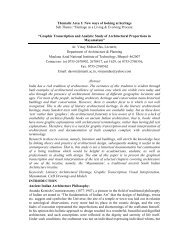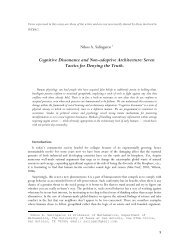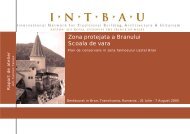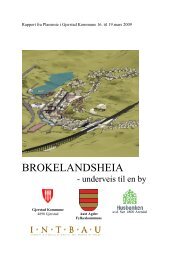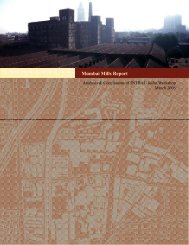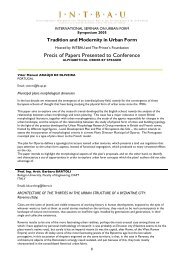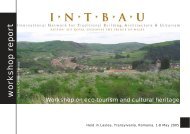S. Dalvi - Intbau
S. Dalvi - Intbau
S. Dalvi - Intbau
You also want an ePaper? Increase the reach of your titles
YUMPU automatically turns print PDFs into web optimized ePapers that Google loves.
Far more ubiquitous and pervasive is the non-monumental sacred architecture following adomestic scale. It is this second type that creates the urban fabric of the towns of the Konkan.This cuts across religious lines. Most part privately built places of worship display a typical formof construction associated with the Konkan. This typology has emerged out of locally availablebuilding materials and building/craft practices, and responds to the climate of the Konkan. Thenon-monumental, privately built places of worship display typical Konkan style timber frameconstruction with sloped roofs, detailed with open fronts of TW framework with infill. Thistypology has emerged out of local materials, craftsmanship and climate. As such they share suchcharacteristics with the domestic architecture also predominant in these towns. The domestictypologies in the Konkan are1. Wadas: courtyard houses with timber frame construction, typifying a particular way oflife.2. Muslim houses with front verandahs and highly ornate neo-Baroque features on facades,sometimes combined with vernacular features in timber.3. Colonial Bungalows adapted to a local lifestyle.Figure 2. Domestic Architecture- Wadas of PanvelA cosmopolitan self-similarityThe Domestic scale is significant in the way it is reworked into the design of the sacredstructures. When built, irrespective of religious denomination, they take from the buildingtraditions of the domestic houses, built of timber construction and deep sloping roofs, fitting inneatly within the residential fabric of the townscape.These buildings are truly non-iconic, giving no overt symbols of faith and one could be easilymistaken for another. It is only in the interior spaces that the accoutrements of religious ritualshow the places to be what they really are- mosques, temples, derasars, agiarys or synagogues.Sacred architecture in Navi Mumbai is best read in continuity with similar sites all over this partof the Konkan in that they reveal a non monumental, non iconic aspect, that it is at oncecontemplative, urbane and self similar.





